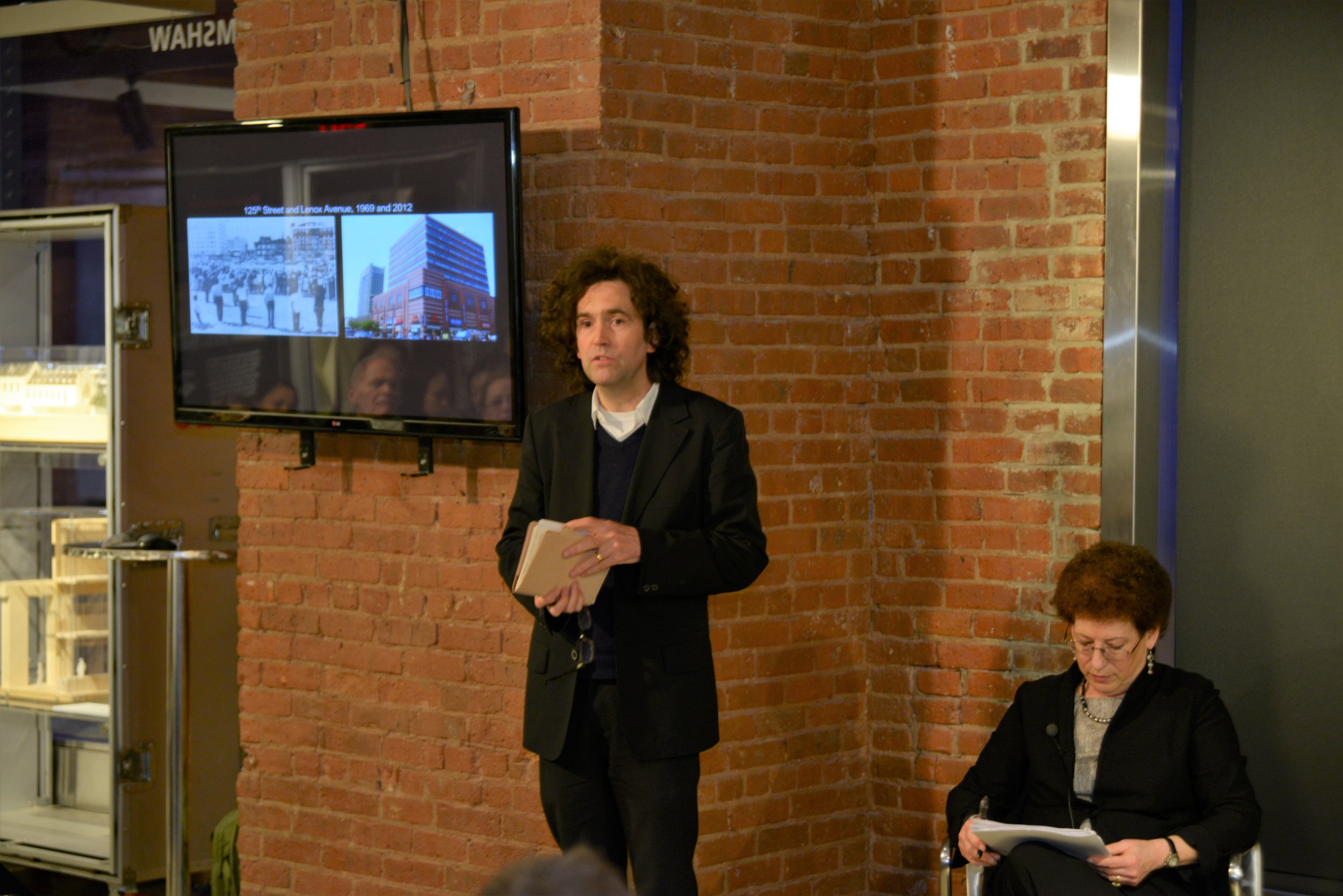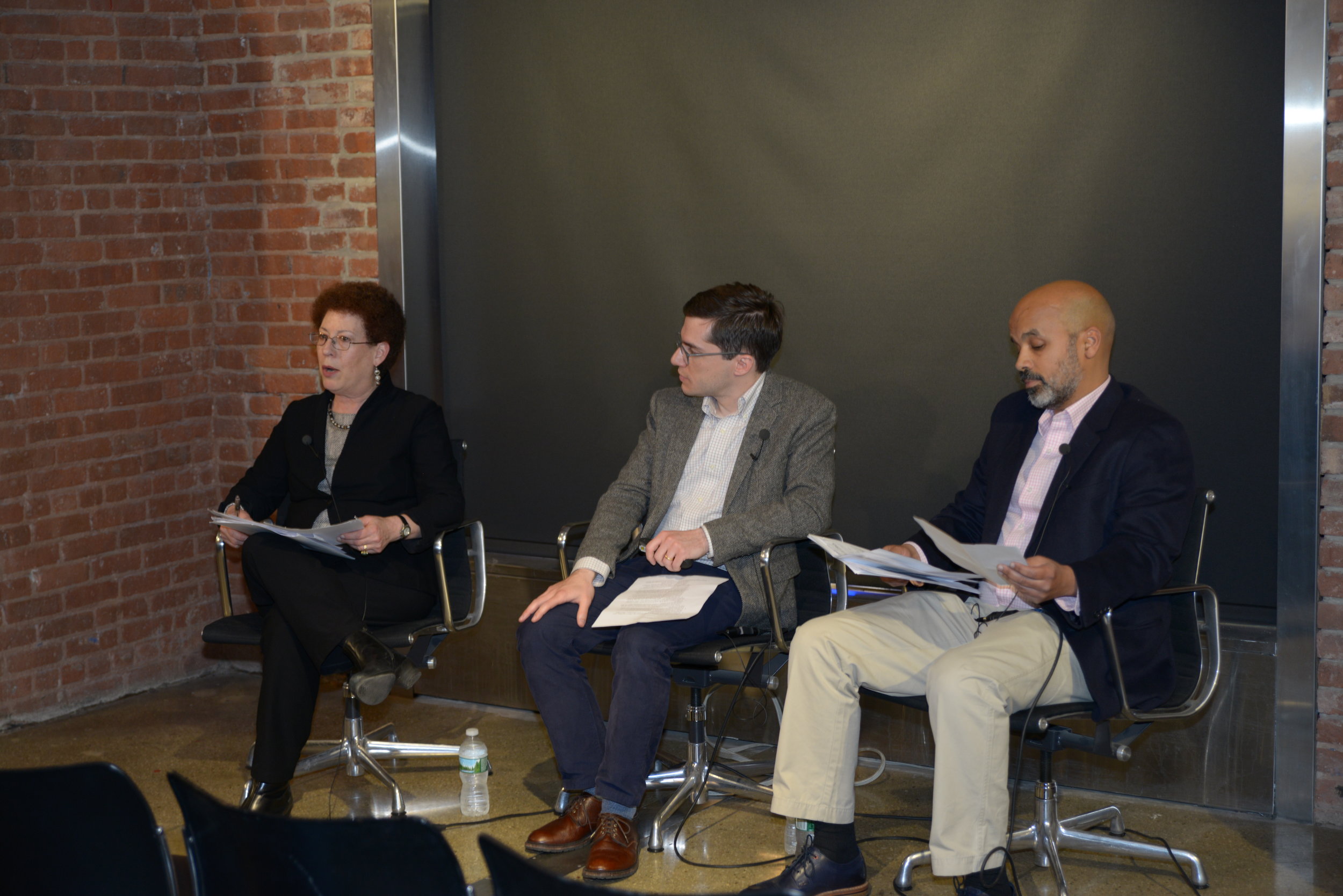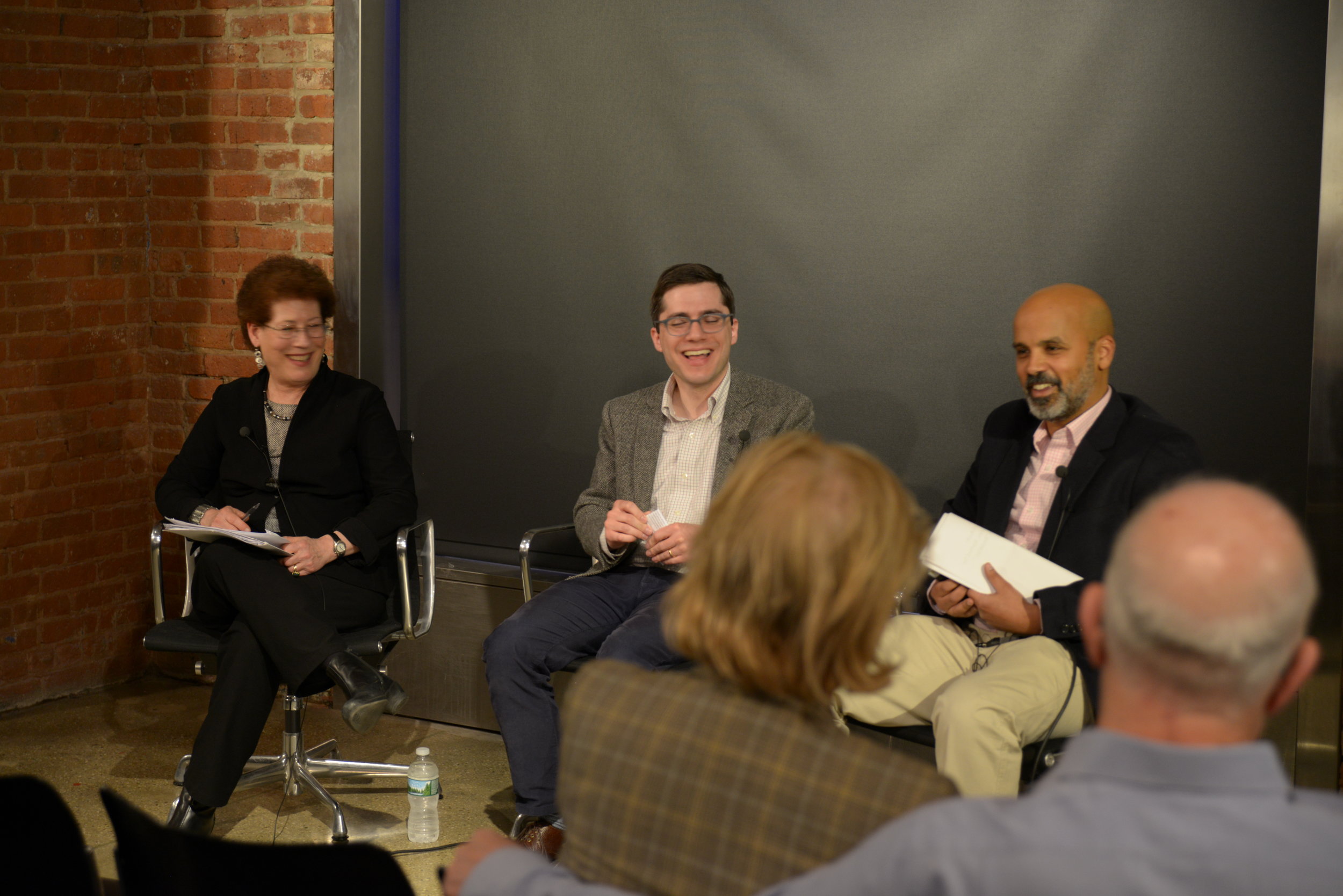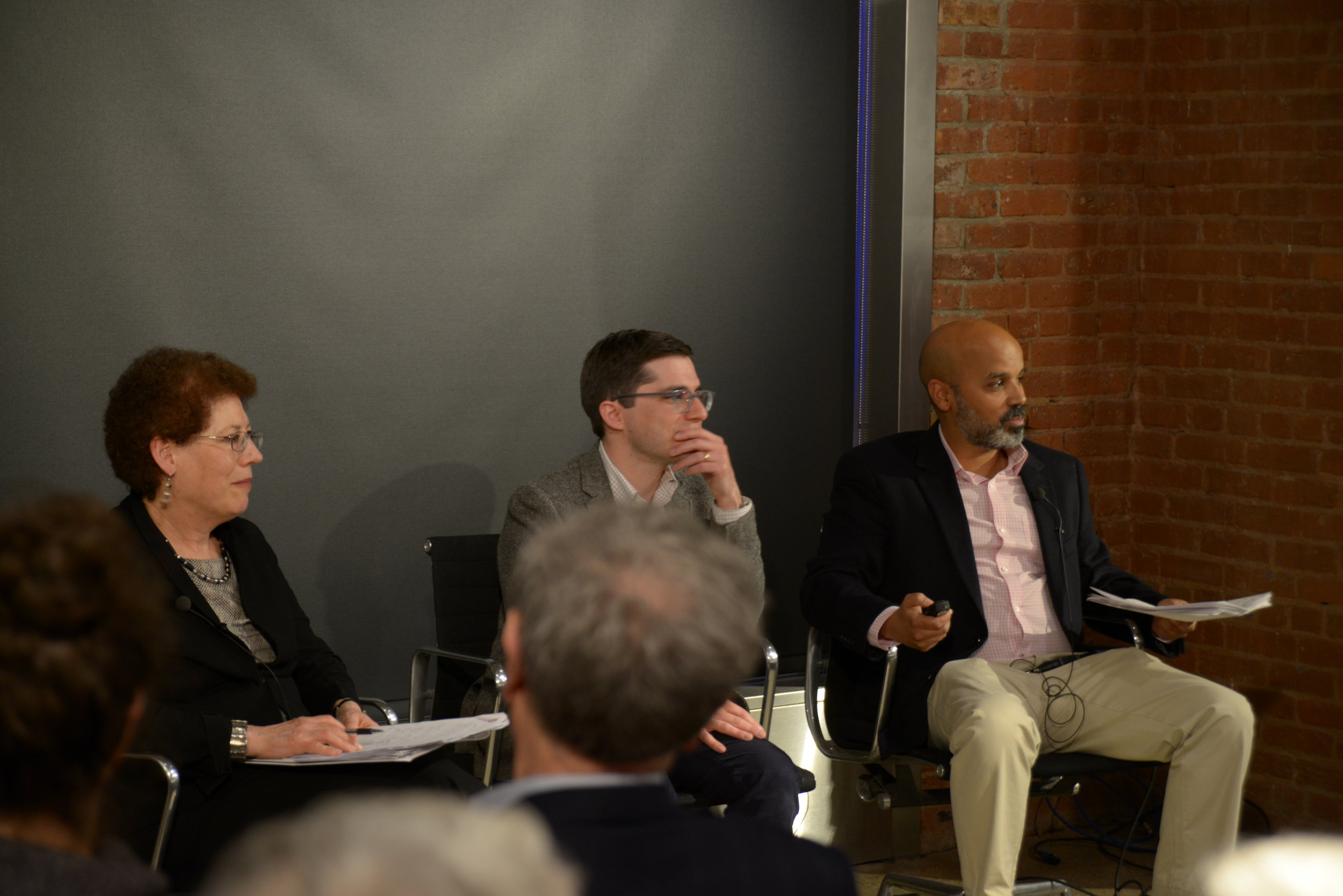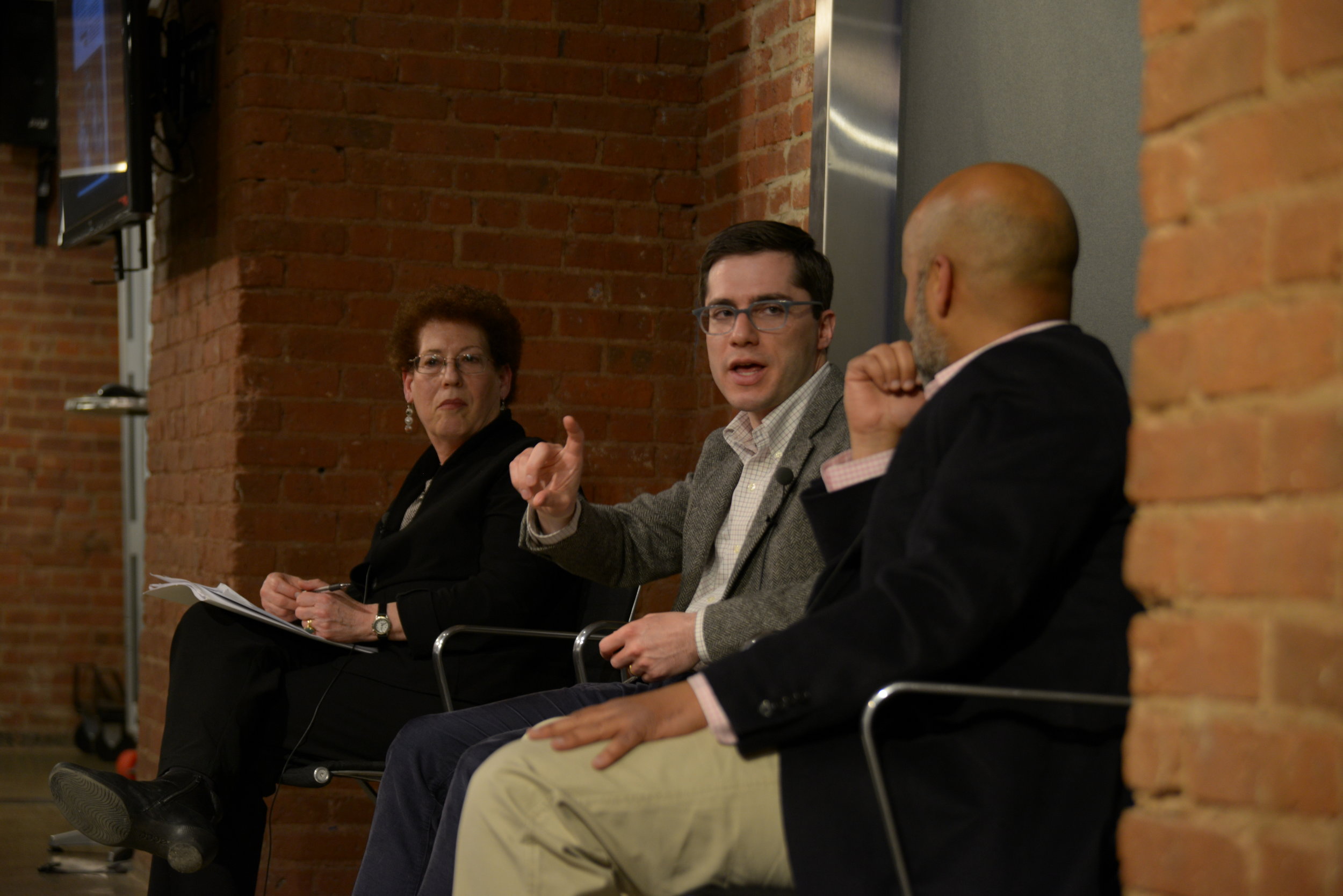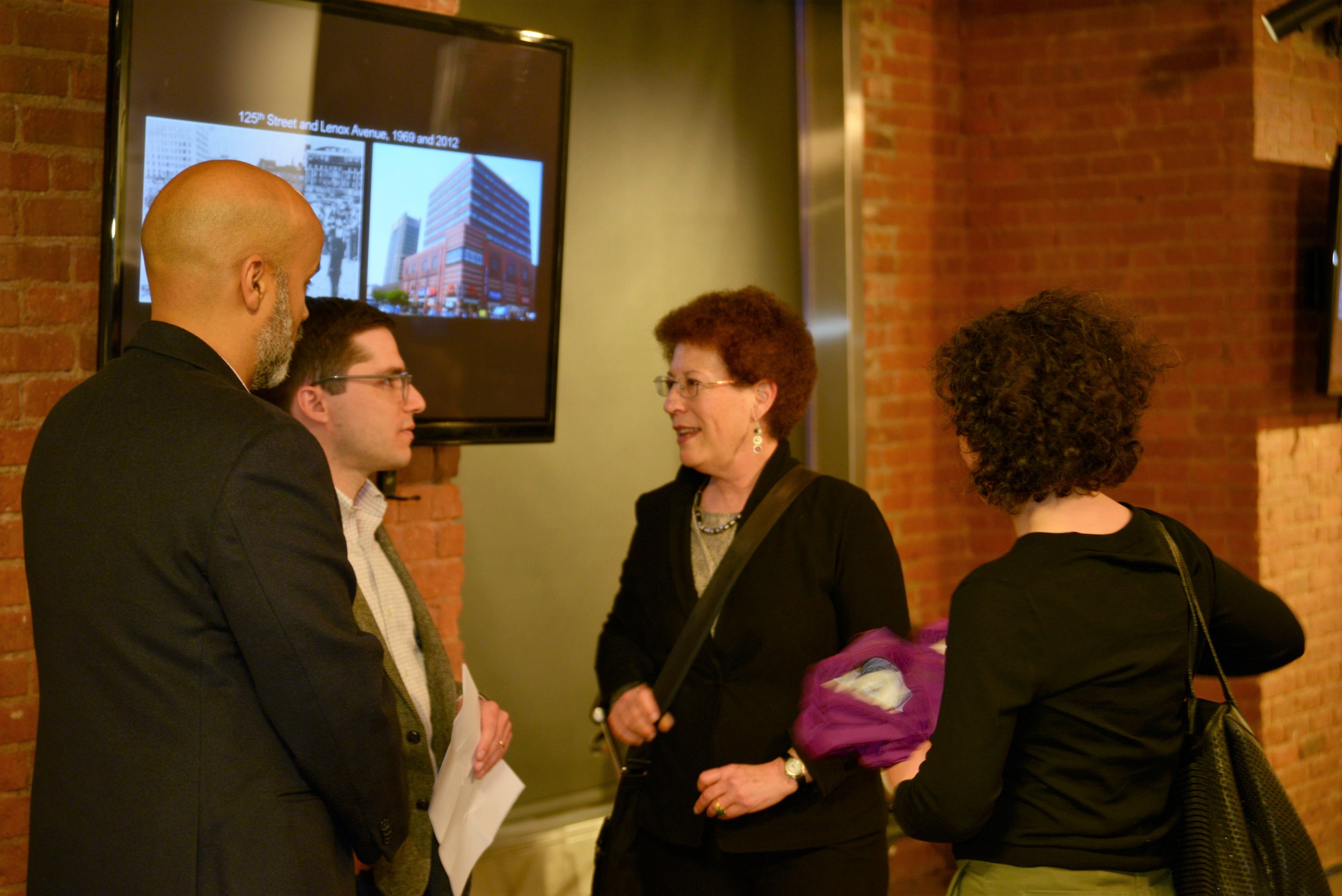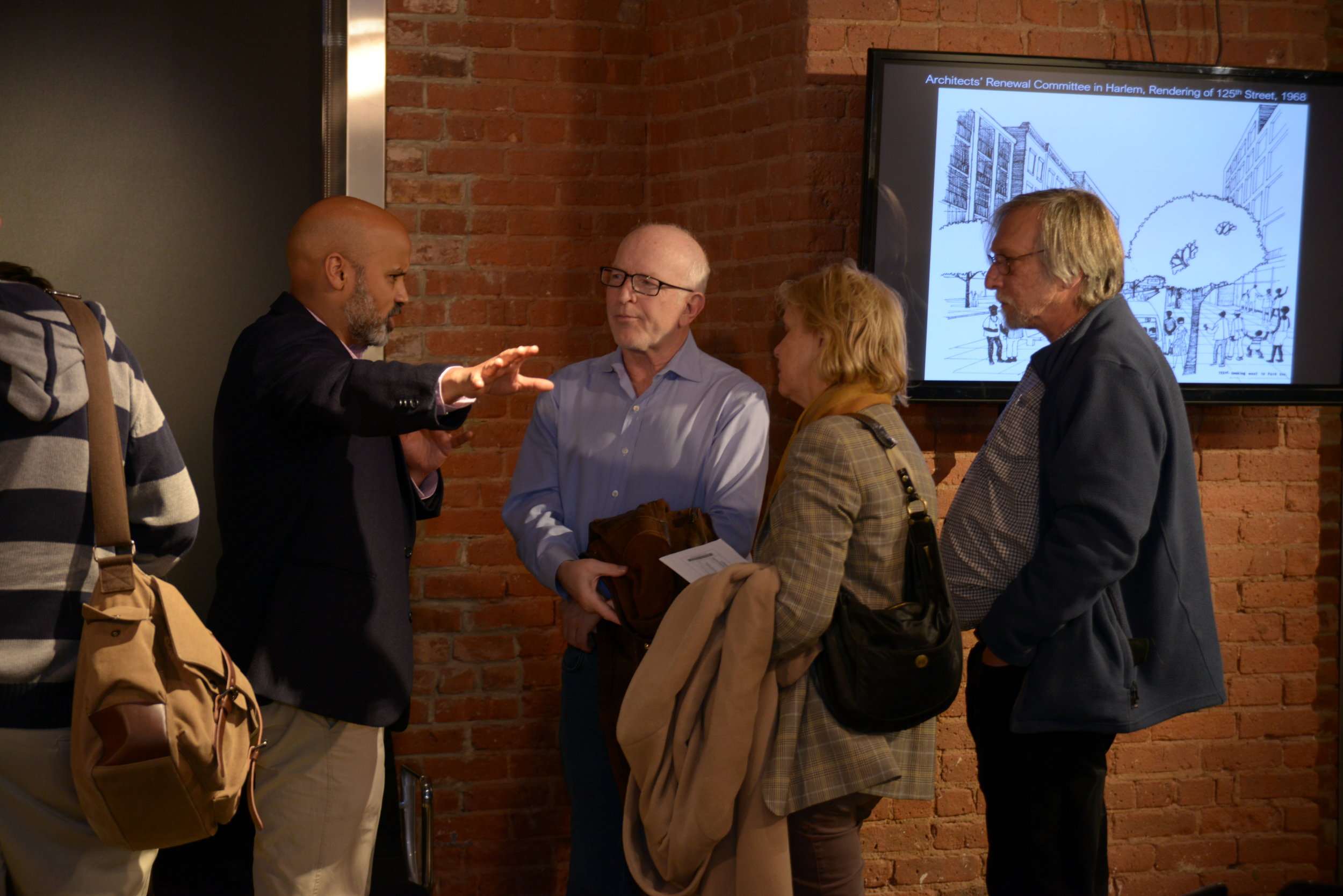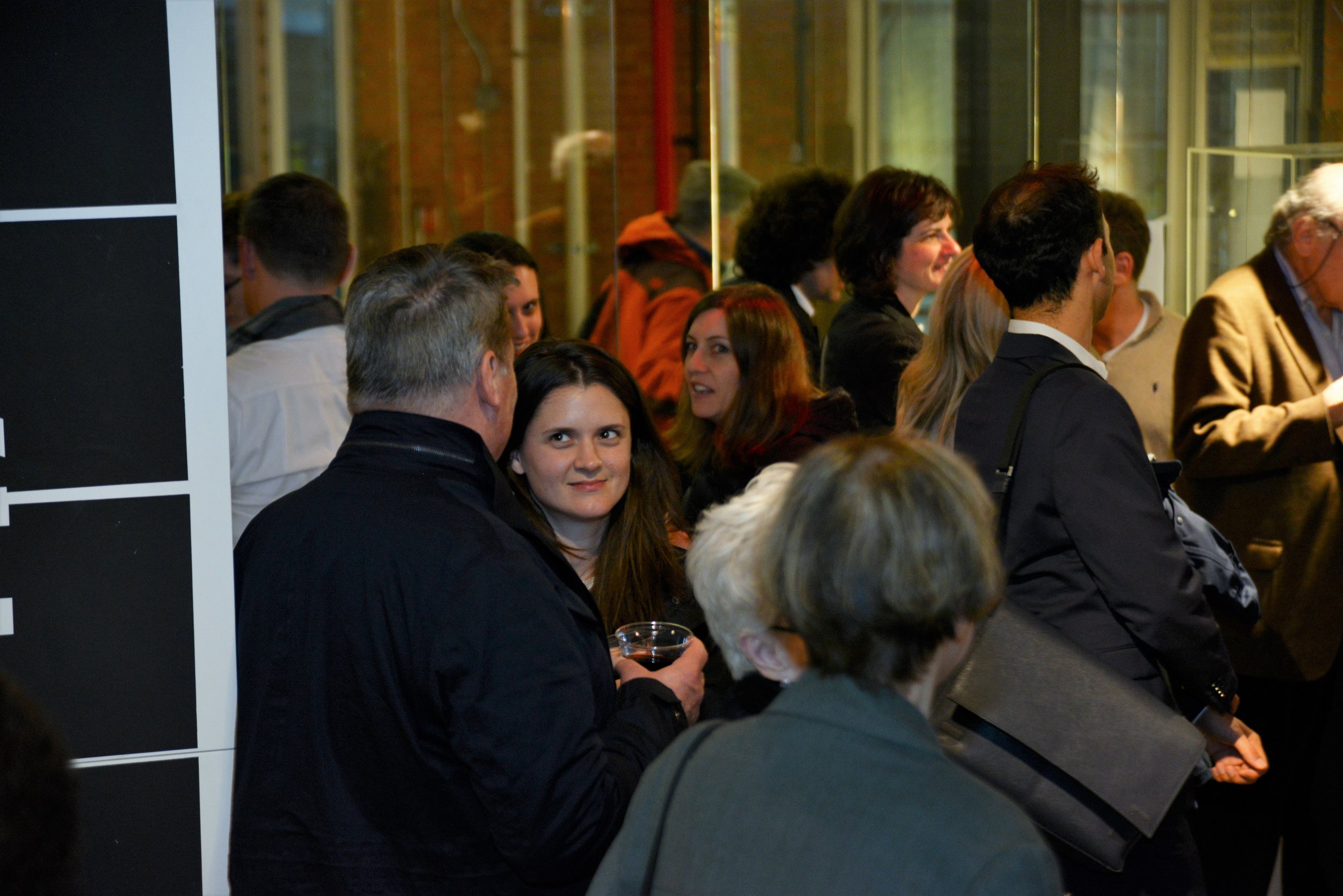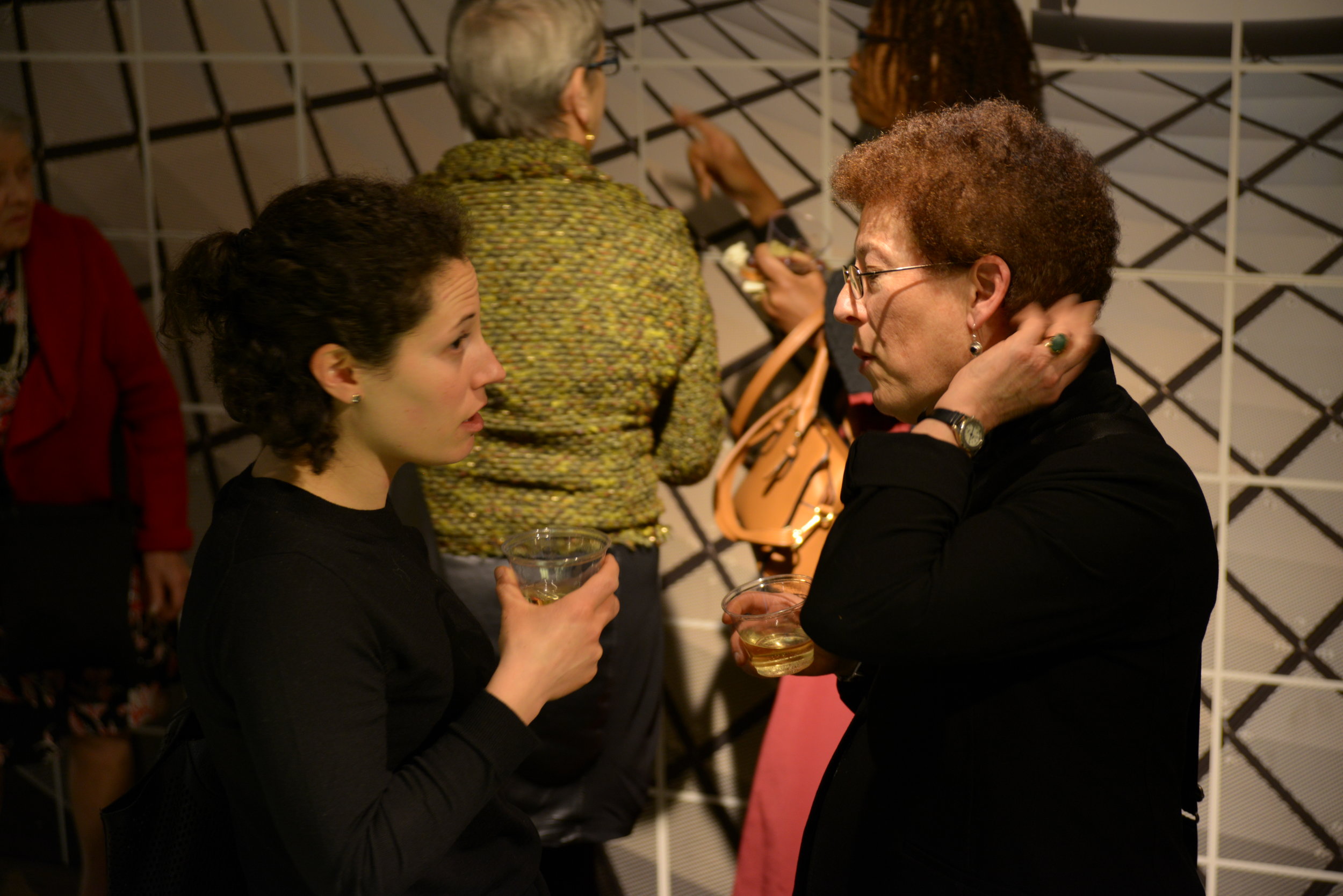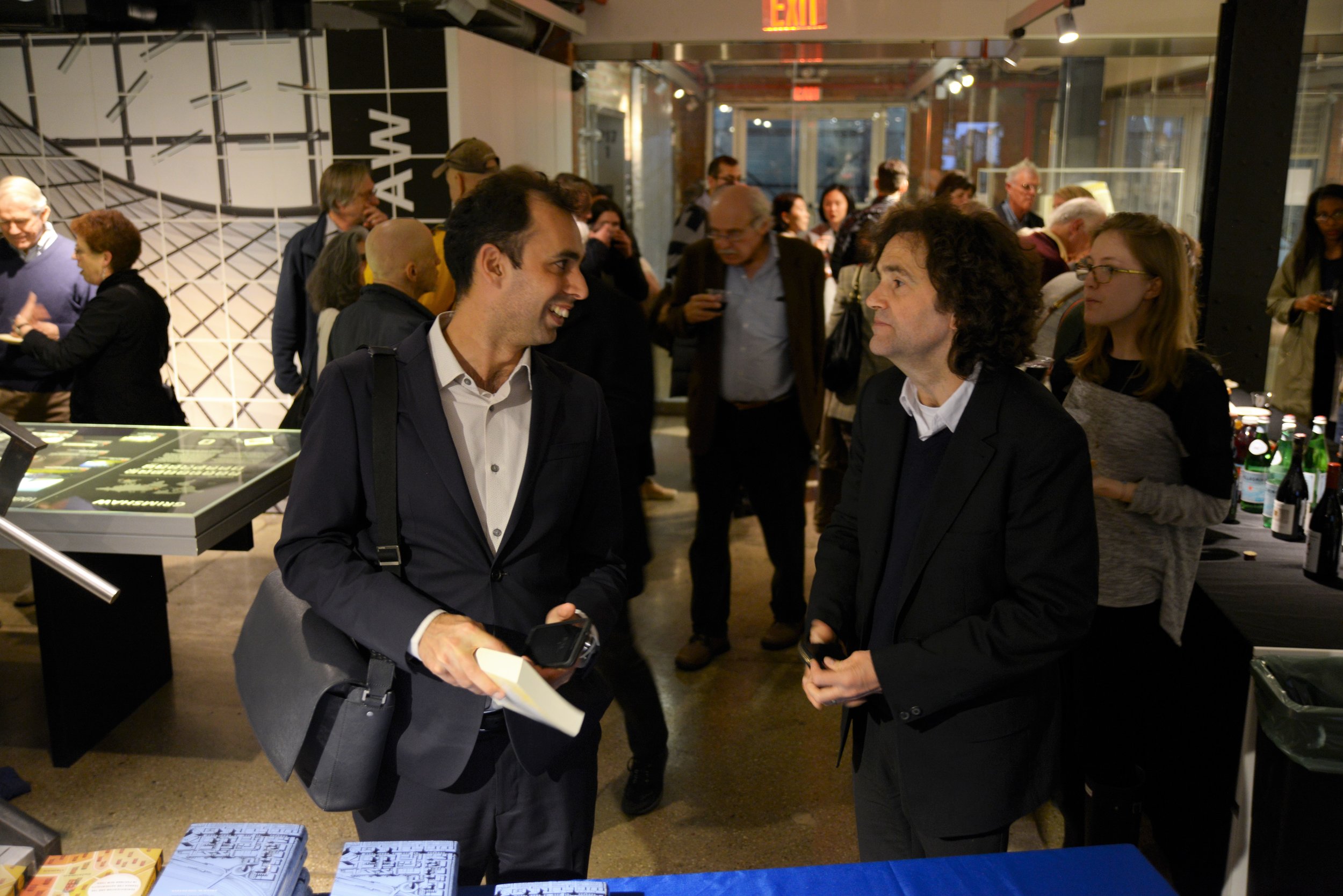On Monday, April 16th, 2018 at 6:30pm, please join the Harvard Alumni Architecture and Urban Society for a conversation focused on the history of urban transformation and gentrification in late 20th century New York City. Brian Goldstein, assistant professor of architectural history at Swarthmore College and author of The Roots of Urban Renaissance: Gentrification and the Struggle Over Harlem, and Suleiman Osman, associate professor of American Studies at George Washington University and author of The Invention of Brownstone Brooklyn: Gentrification and the Search for Authenticity in Postwar New York, will present some of the research that went into their publications and join in conversation with Lizabeth Cohen, Dean of the Radcliffe Institute for Advanced Study and the Howard Mumford Jones Professor of American Studies in the Department of History at Harvard University. The discussion will be followed by a reception with complimentary drinks and light snacks.
Location:
The discussion will begin promptly at 6:30 and will take place in the ground floor gallery of Grimshaw Architects’ office located at 637 West 27th Street
Lizabeth Cohen, Moderator
Lizabeth Cohen is Dean of the Radcliffe Institute for Advanced Study at Harvard University and the Howard Mumford Jones Professor of American Studies in the Department of History. She is the author of Making a New Deal: Industrial Workers in Chicago, 1919-1939 (1990, new edition with new introduction 2008; Canto Classic 2015), winner of the Bancroft Prize and a finalist for the Pulitzer, and A Consumers’ Republic: The Politics of Mass Consumption in Postwar America (2003). Her interests have recently focused on urbanism and the built environment. She is currently finishing a new book, Saving America's Cities: Ed Logue and the Struggle to Renew Urban America in the Suburban Age (Farrar, Straus & Giroux, forthcoming 2019), which explores the rebuilding of American cities after World War II by following the career of a major figure in urban renewal, Edward J. Logue, who worked in New Haven in the 1950s, Boston in the 1960s, and New York City and State from 1968-1985. During academic year 2007-8 she was the Harmsworth Professor at Oxford University and she is an elected member of the American Academy of Arts & Sciences. She received her A.B. from Princeton University and her Ph.D. from the University of California Berkeley. She has consulted widely on museum exhibitions, documentary films, and many other public history projects.
Speaker Biographies:
Brian D. Goldstein
Brian D. Goldstein is an urban and architectural historian and assistant professor of architectural history at Swarthmore College. Previously he was assistant professor in the School of Architecture and Planning at the University of New Mexico and A.W. Mellon Postdoctoral Fellow at the University of Wisconsin-Madison. His research and teaching examine the intersection of politics, social movements, and the built environment, especially in the United States in the twentieth century. His book, The Roots of Urban Renaissance: Gentrification and the Struggle Over Harlem, was published in 2017 by Harvard University Press. His article, “‘The Search for New Forms’: Black Power and the Making of the Postmodern City” (Journal of American History, September 2016), received the 2017 Catherine Bauer Wurster Prize from the Society for American City and Regional Planning History. Goldstein’s articles have also appeared in the Journal of Urban History and the edited volumes Reassessing Rudolph (Yale University School of Architecture, 2017), Affordable Housing in New York (Princeton University Press, 2016), and Summer in the City: John Lindsay, New York, and the American Dream (Johns Hopkins University Press, 2014). He received his PhD from Harvard University in 2013 and AB from Harvard College in 2004.
Suleiman Osman
Suleiman Osman is associate professor of American Studies at George Washington University. He specializes in 20th century US history, urban history, the built environment and the study of race and ethnicity. His first book, The Invention of Brownstone Brooklyn: Gentrification and the Search for Authenticity in Postwar New York (Oxford University Press, 2011) was awarded the Hornblower Prize by the New York Society Library. He received his PhD in the History of American Civilization at Harvard University. His thesis advisor at Harvard was Lizabeth Cohen.
Featured Book descriptions:
The Invention of Brownstone Brooklyn: Gentrification and the Search for Authenticity in Postwar New York , 2011
by Suleiman Osman
Considered one of the city's most notorious industrial slums in the 1940s and 1950s, Brownstone Brooklyn by the 1980s had become a post-industrial landscape of hip bars, yoga studios, and beautifully renovated, wildly expensive townhouses. In The Invention of Brownstone Brooklyn, Suleiman Osman offers a groundbreaking history of this unexpected transformation. Challenging the conventional wisdom that New York City's renaissance started in the 1990s, Osman locates the origins of gentrification in Brooklyn in the cultural upheavals of the 1960s and 1970s. Gentrification began as a grassroots movement led by young and idealistic white college graduates searching for "authenticity" and life outside the burgeoning suburbs. Where postwar city leaders championed slum clearance and modern architecture, "brownstoners" (as they called themselves) fought for a new romantic urban ideal that celebrated historic buildings, industrial lofts and traditional ethnic neighborhoods as a refuge from an increasingly technocratic society. Osman examines the emergence of a "slow-growth" progressive coalition as brownstoners joined with poorer residents to battle city planners and local machine politicians. But as brownstoners migrated into poorer areas, race and class tensions emerged, and by the 1980s, as newspapers parodied yuppies and anti-gentrification activists marched through increasingly expensive neighborhoods, brownstoners debated whether their search for authenticity had been a success or failure.
The Roots of Urban Renaissance: Gentrification and the Struggle Over Harlem, 2017
by Brian Goldstein
Displaying gleaming new shopping centers and refurbished row houses, Harlem today bears little resemblance to the neighborhood of the midcentury urban crisis. Brian Goldstein traces Harlem’s widely noted “Second Renaissance” to a surprising source: the radical 1960s social movements that resisted city officials and fought to give Harlemites control of their own destiny. In the post–World War II era, large-scale government-backed redevelopment drove the economic and physical transformation of urban neighborhoods. But in the 1960s, young Harlem activists inspired by the civil rights movement recognized urban renewal as one more example of a power structure that gave black Americans little voice in the decisions that most affected them. They demanded the right to plan their own redevelopment and founded new community-based organizations to achieve that goal. In the following decades, those organizations became the crucibles in which Harlemites debated what their streets should look like and who should inhabit them. Radical activists envisioned a Harlem built by and for its low-income, predominantly African-American population. In the succeeding decades, however, community-based organizations came to pursue a very different goal: a neighborhood with national retailers and increasingly affluent residents. In charting the history that transformed Harlem by the twenty-first century, The Roots of Urban Renaissance demonstrates that gentrification was not imposed on an unwitting community by unscrupulous developers or opportunistic outsiders. Rather, it grew from the neighborhood’s grassroots, producing a legacy that benefited some longtime residents and threatened others.



